Audi 2012 Annual Report Download - page 184
Download and view the complete annual report
Please find page 184 of the 2012 Audi annual report below. You can navigate through the pages in the report by either clicking on the pages listed below, or by using the keyword search tool below to find specific information within the annual report.-
 1
1 -
 2
2 -
 3
3 -
 4
4 -
 5
5 -
 6
6 -
 7
7 -
 8
8 -
 9
9 -
 10
10 -
 11
11 -
 12
12 -
 13
13 -
 14
14 -
 15
15 -
 16
16 -
 17
17 -
 18
18 -
 19
19 -
 20
20 -
 21
21 -
 22
22 -
 23
23 -
 24
24 -
 25
25 -
 26
26 -
 27
27 -
 28
28 -
 29
29 -
 30
30 -
 31
31 -
 32
32 -
 33
33 -
 34
34 -
 35
35 -
 36
36 -
 37
37 -
 38
38 -
 39
39 -
 40
40 -
 41
41 -
 42
42 -
 43
43 -
 44
44 -
 45
45 -
 46
46 -
 47
47 -
 48
48 -
 49
49 -
 50
50 -
 51
51 -
 52
52 -
 53
53 -
 54
54 -
 55
55 -
 56
56 -
 57
57 -
 58
58 -
 59
59 -
 60
60 -
 61
61 -
 62
62 -
 63
63 -
 64
64 -
 65
65 -
 66
66 -
 67
67 -
 68
68 -
 69
69 -
 70
70 -
 71
71 -
 72
72 -
 73
73 -
 74
74 -
 75
75 -
 76
76 -
 77
77 -
 78
78 -
 79
79 -
 80
80 -
 81
81 -
 82
82 -
 83
83 -
 84
84 -
 85
85 -
 86
86 -
 87
87 -
 88
88 -
 89
89 -
 90
90 -
 91
91 -
 92
92 -
 93
93 -
 94
94 -
 95
95 -
 96
96 -
 97
97 -
 98
98 -
 99
99 -
 100
100 -
 101
101 -
 102
102 -
 103
103 -
 104
104 -
 105
105 -
 106
106 -
 107
107 -
 108
108 -
 109
109 -
 110
110 -
 111
111 -
 112
112 -
 113
113 -
 114
114 -
 115
115 -
 116
116 -
 117
117 -
 118
118 -
 119
119 -
 120
120 -
 121
121 -
 122
122 -
 123
123 -
 124
124 -
 125
125 -
 126
126 -
 127
127 -
 128
128 -
 129
129 -
 130
130 -
 131
131 -
 132
132 -
 133
133 -
 134
134 -
 135
135 -
 136
136 -
 137
137 -
 138
138 -
 139
139 -
 140
140 -
 141
141 -
 142
142 -
 143
143 -
 144
144 -
 145
145 -
 146
146 -
 147
147 -
 148
148 -
 149
149 -
 150
150 -
 151
151 -
 152
152 -
 153
153 -
 154
154 -
 155
155 -
 156
156 -
 157
157 -
 158
158 -
 159
159 -
 160
160 -
 161
161 -
 162
162 -
 163
163 -
 164
164 -
 165
165 -
 166
166 -
 167
167 -
 168
168 -
 169
169 -
 170
170 -
 171
171 -
 172
172 -
 173
173 -
 174
174 -
 175
175 -
 176
176 -
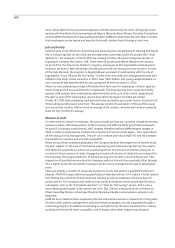 177
177 -
 178
178 -
 179
179 -
 180
180 -
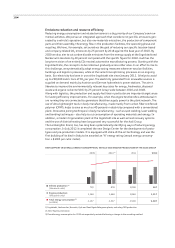 181
181 -
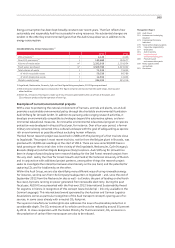 182
182 -
 183
183 -
 184
184 -
 185
185 -
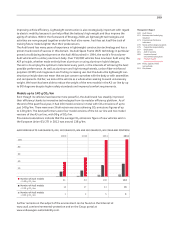 186
186 -
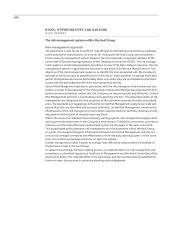 187
187 -
 188
188 -
 189
189 -
 190
190 -
 191
191 -
 192
192 -
 193
193 -
 194
194 -
 195
195 -
 196
196 -
 197
197 -
 198
198 -
 199
199 -
 200
200 -
 201
201 -
 202
202 -
 203
203 -
 204
204 -
 205
205 -
 206
206 -
 207
207 -
 208
208 -
 209
209 -
 210
210 -
 211
211 -
 212
212 -
 213
213 -
 214
214 -
 215
215 -
 216
216 -
 217
217 -
 218
218 -
 219
219 -
 220
220 -
 221
221 -
 222
222 -
 223
223 -
 224
224 -
 225
225 -
 226
226 -
 227
227 -
 228
228 -
 229
229 -
 230
230 -
 231
231 -
 232
232 -
 233
233 -
 234
234 -
 235
235 -
 236
236 -
 237
237 -
 238
238 -
 239
239 -
 240
240 -
 241
241 -
 242
242 -
 243
243 -
 244
244 -
 245
245 -
 246
246 -
 247
247 -
 248
248 -
 249
249 -
 250
250 -
 251
251 -
 252
252 -
 253
253 -
 254
254 -
 255
255 -
 256
256 -
 257
257 -
 258
258 -
 259
259 -
 260
260 -
 261
261 -
 262
262 -
 263
263 -
 264
264 -
 265
265 -
 266
266 -
 267
267 -
 268
268 -
 269
269 -
 270
270 -
 271
271 -
 272
272 -
 273
273 -
 274
274 -
 275
275 -
 276
276 -
 277
277 -
 278
278 -
 279
279 -
 280
280 -
 281
281 -
 282
282 -
 283
283 -
 284
284 -
 285
285
 |
 |

187
Management Report
140 Audi Group
151 Business and underlying
situation
173 Financial performance
indicators
176 Social and ecological aspects
176 Corporate responsibility
177 Employees
181 Audi in society
182 Location-based
environmental aspects
186 Product-based
environmental aspects
190 Risks, opportunities
and outlook
201 Disclaimer
Mobility based on alternative drive technologies and the increased use of renewables will be essen-
tial if CO2 emissions are to be permanently lowered. At Audi, we do more than simply consider
the CO2 emissions produced when a vehicle is driven; we also look at the wider environmental
footprint of products over their entire life cycle. In this context, the Audi Group is also involved
in various research projects such as the Audi e-gas project, where gas generated from renewables
for use as vehicle fuel is its end product, and a highly promising concept to manufacture new
biofuels (Audi e-ethanol and e-diesel) that can be used instead of conventional gasoline and
diesel (cf. “CO2-neutral mobility” under “Research and development,” p. 154).
MILESTONES IN EFFICIENCY TECHNOLOGY FROM THE AUDI BRAND
Hybrid models
The Audi brand enjoys a long-standing reputation as an expertise carrier in hybrid technology.
The Company’s first venture into this area was in 1989 with the Audi duo, a technology study
based on the Audi 100 Avant. In the past fiscal year, we expanded our portfolio of hybrid models
with the Audi A6 hybrid full-size sedan and the Audi A8 hybrid luxury sedan.
These two models’ drivetrains share many common features and combine the best of both power
sources. The combined system output of the 2.0 TFSI engine and electric motor is 180 kW
(245 hp), with a torque of 480 Nm. The lithium-ion battery located at the rear acts as the energy
store. It is cooled with air in two different ways, depending on requirements – by a blower from
the interior, and by a separate refrigerant circuit that is linked to the deluxe automatic air condi-
tioning. This technology keeps the battery at an appropriate temperature level across a wide
range of situations, assuring a comparatively high proportion of electric operation. The Audi A6
hybrid full-size sedan and the Audi A8 hybrid luxury sedan can travel at up to 100 km/h purely
electrically. Both hybrid models can cover around three kilometers at a constant 60 km/h with zero
emissions. The hybridization process is to be rolled out gradually across other car lines as well.
►104 models ≤ 140 g CO
2
/km; 36 models ≤ 120 g CO
2
/km; 6 models ≤ 100 g CO
2
/km
►Presentation of the SQ5 TDI, the first S model with TDI engine in the history of Audi
►Launch of Audi A6 hybrid and Audi A8 hybrid
►Launch of the S6, S6 Avant, S7 Sportback and S8 models with cylinder on demand technology
2012
2011
•Launch of Q5 hybrid quattro
•Launch of freewheeling function on the Audi Q3
•Participation of e-gas powered Audi A3 TCNG in the Michelin Challenge Bibendum 2011
►Launch of start-stop system and driver information system with efficiency program
2009
2006
►Launch of Audi valvelift system (AVS)
►Launch of Audi S tronic
2003
2002
►Launch of FSI technology
►Volume-produced car with all-aluminum body: Audi A2
1999
►Launch of Audi Space Frame (ASF)
1994
►Launch of TDI technology
►Audi duo hybrid model
2013
►Launch of A3 Sportback g-tron for operation on Audi e-gas or natural gas
►Launch of cylinder on demand technology in the A1, A3 and RS6 Avant
1989
